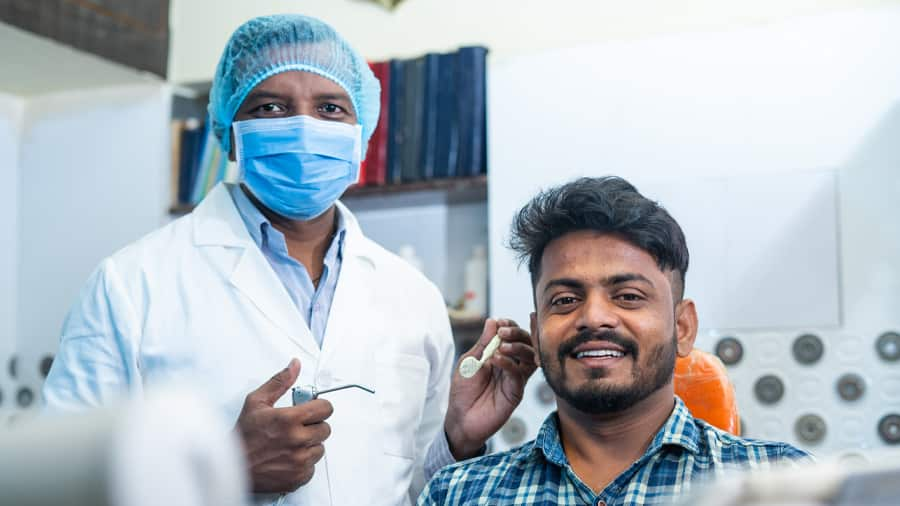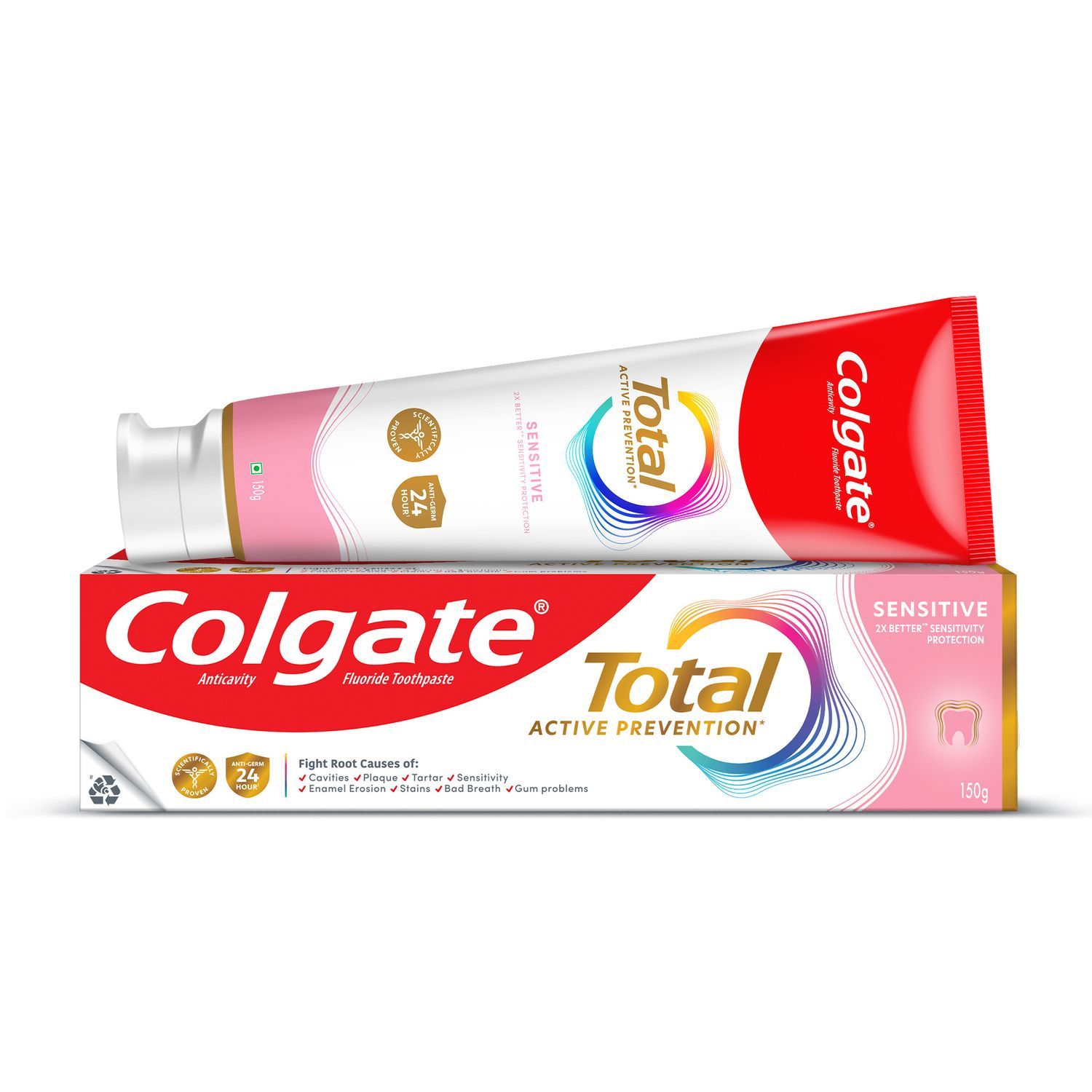How do I know if I need a wisdom tooth extraction?
Visiting your dentist twice a year for regular check-ups will help your dentist follow your teeth' progress. According to the American Dental Association (ADA), as your wisdom teeth make their way through your gums, your dentist will be monitoring your mouth for signs of the following:
- Positioning: Wisdom teeth that aren’t in the right position can allow food to become trapped. That gives cavity-causing bacteria a place to grow.
- Oral Care: Wisdom teeth that haven’t come in properly, which can make it difficult to floss between the wisdom teeth and the molars next to them.
- Infection: Wisdom teeth that have partially come through can give bacteria a place to enter the gums and create a place for infection to occur. This may also lead to pain, swelling and stiffness in your jaw.
- Crowding: Wisdom teeth that don’t have room to come through are thought by some to crowd or damage neighbouring teeth.
- Impacted tooth: A wisdom tooth that is impacted can form a cyst on or near the impacted tooth. This could damage the roots of nearby teeth or destroy the bone that supports your teeth.
Additionally, getting your wisdom teeth out when you're young may be healthier in the long run as you risk fewer complications than older adults.
How do I prepare for a wisdom tooth extraction?
Depending on your situation, your dentist may perform the office procedure or suggest that you consult with an oral surgeon. When you meet with your dental professional, here are some questions you may want to ask:
- How many wisdom teeth need to be removed?
- What type of anaesthesia will be administered?
- How complicated or in-depth is the procedure?
- What is the estimated duration of the procedure?
- Has damage occurred to the surrounding teeth?
- What is the likelihood of nerve damage?
- Will you need other dental treatments at a later date?
- What's the average turnaround time for healing and returning to regular activity?
What are the risks of a wisdom tooth extraction?
While most wisdom tooth extractions don't result in long-term complications, problems like dry socket can occur after the procedure. Dry socket is when the post-surgical blood clot dislodges from the surgical wound (the socket) and exposes bone below. Dry socket can be painful and delay the healing process. If you're worried about the risks during your wisdom tooth extraction, talk to your dentist or oral surgeon about your concerns.
What can I expect before the procedure?
Before the day of your outpatient procedure, make arrangements for someone to drive you to and from the surgery, and follow any dentist recommended dietary restrictions. If you have any prescriptions or over-the-counter (OTC) medications, check to see if they are okay to take before the surgery. Having the answers to all these questions will ensure both a smooth surgery and recovery.
What kind of anaesthesia is used?
There are three types of anaesthesia, and depending upon the nature of your particular procedure coupled with your comfort level, you'll end up receiving it in one of three ways:
- Local Anaesthesia: Administered by injection at the site of the tooth extraction after using a numbing agent. You'll be awake for the procedure, and though you'll feel some pressure and movement, you shouldn't experience any pain.
- Sedation Anaesthesia: Administered through an intravenous (IV) line. This sedation type allows you to sleep through the procedure so that you won't feel any pain during the surgery. Your surgeon will also numb your gums.
- General Anaesthesia: If you're not keen on needles, general anaesthesia can be inhaled. Much like sedation, you will be asleep throughout the procedure, and your vitals are all monitored by the surgical team.
How are wisdom teeth extracted?
Your dentist or oral surgeon will make an incision in the gumline, creating flaps to expose both the tooth and the underlying bone area. Any bone that blocks access to the tooth will be removed before the dentist or oral surgeon divides the tooth into sections, making it easier to remove.
The dentist removes the tooth and clears away any remaining debris from around the gumline or the bone. Then, the wound is stitched up. The dentist puts gauze over the extraction site to control any extra bleeding and help with clotting.
What happens after the procedure?
Once the surgery is done, you'll be taken to a recovery room to allow all the anaesthesia to wear off. If you chose the local option, you'd probably recover in the same procedure chair.
Do:
- Follow all aftercare instructions.
- Change gauze every 30 minutes as needed. Discontinue gauze when the bleeding stops, usually 3-4 hours. Do not leave in overnight. A sleeping patient should be aroused to check the gauze every 20 minutes.
- Drink plenty of water without using a straw.
- Rest for the remainder of the day. You can go back to your regular schedule the next day, but keep strenuous activity to a minimum for about a week while your surgical wounds heal.
- Eat soft foods for a day or two following the surgery to avoid irritating the area.
- Take OTC medications that contain acetaminophen if you experience pain after surgery. If pain continues, contact your dentist or surgeon, and they may be able to prescribe something more substantial. Using an ice pack against your cheek can also help relieve minor pains.
- Gently rinse your mouth with warm saltwater (8 ounces of water with 1/2 teaspoon of table salt) after every meal and once every couple of hours for a week.
- Start brushing again after the first day or two, but be careful near the surgical site.
Don't:
- Drink sugary, caffeinated, carbonated, or alcoholic beverages for the first few days.
- Use a straw because the sucking action might inadvertently dislodge the wound's blood clot, delaying healing.
- Eat foods that are chewy, overly spicy, or get stuck between teeth.
- Engage in any type of spitting because that may dislodge the blood clot. Swelling and bruising after a procedure is normal, but these circumstances should improve within a couple of days using an ice pack.
- Brush, spit or use mouthwash after wisdom teeth removal several days to a week after surgery.
- Don't smoke or chew tobacco products. Consumption of any tobacco product after oral surgery can seriously delay healing and increase the risk of any complications or infections. It would be best if you also refrain from smoking before tooth extraction. Nicotine and other tobacco-related chemicals can increase your risk of dry socket after the procedure.
- If you have stitches that dissolve on their own, they should be gone in a few weeks. If your stitches need to be removed, your dentist will most likely have already set up an appointment with you.
When should I call my dentist or oral surgeon?
If you're experiencing these signs or symptoms after your surgery, contact your dentist or oral surgeon immediately:
- Swelling that worsens after several days
- Fever
- Prescribed pain medications being ineffective against pain
- Saltwater rinsing not ridding your mouth of a bad or lingering aftertaste
- The socket having pus gathering within or oozing from the wound
- A loss of feeling or a persistent kind of numbness
It usually takes about a week to get back to a routine after your wisdom tooth extraction, but soon you'll be smiling pain-free! Remember to stay up-to-date with your regular dental check-ups so your dentist can track how your wisdom teeth are coming in. While getting these molars extracted can seem daunting, the procedure is relatively routine and can set your smile up for a bright and healthy future.
This article is intended to promote understanding of and knowledge about general oral health topics. It is not intended to be a substitute for professional advice, diagnosis or treatment. Always seek the advice of your dentist or other qualified healthcare provider with any questions you may have regarding a medical condition or treatment.
ORAL HEALTH QUIZ
What's behind your smile?
Take our Oral Health assessment to get the most from your oral care routine
ORAL HEALTH QUIZ
What's behind your smile?
Take our Oral Health assessment to get the most from your oral care routine













